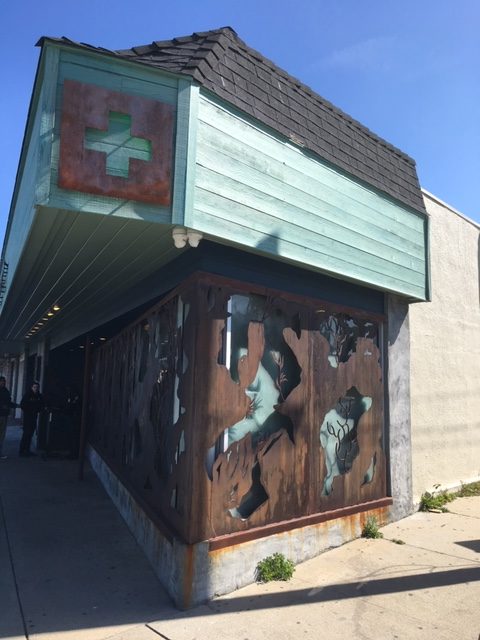Drugs are defined as medicines or other substances which have a physiological effect when ingested or otherwise introduced into the body, and are as old as humans and human civilization. The acceptance of and how drugs are used and perceived is another matter. A case in point is the history of marijuana use in Monterey County, California and the United States as a whole.
It has been a long road, more than 100 years, from criminalization as an illegal drug at both the local and federal levels to the December 2018 Monterey Cannabis Summit hosted by the Monterey County Cannabis Industry Association, the first of its kind on the Central Coast. Monterey County is one of the jurisdictions that has taken the lead in championing legal marijuana use with the authorization of at least 19 registered dispensaries. The area is becoming known as the “emerald triangle” cannabis hotspot, legendary in some circles due to the cultivation of certain strains including the “Big Sur Holy Weed.”
Cannabis is a family of plants containing two primary classifications indica and sativa. The marijuana plant can be both indica and sativa containing moderate levels of Tetrahydrocannabinol (THC) – the ingredient that produces psychoactive reactions in the human body. Hemp can only be sativa and does not contain enough THC to produce psychoactive reactions.
Hemp has been produced by societies for thousands of years. Its production was even mandated by British law for the early U.S. colonies as the product had wide industrial uses including cloth and rope and even used for legal tender to pay taxes. Hemp was cultivated as early as 1795 in California at nearby Mission San Jose under the governorship of Diego de Borica. By 1810, the missions produced two-thirds of the 220,000 pounds of hemp grown in the state.
Marijuana by contrast has another story. Marijuana for recreational purposes historically was used in south Asia as well as in the Muslim world, called by different names including ganja and hashish. It was initially linked in the Americas to the transatlantic slave trade when introduced into the Americas by the Portuguese in Brazil. The earliest record of cannabis cultivators for recreational use in California is in 1895 by members of the Arab, Armenian and Turkish communities who made hashish for local consumption, as well as to supply fellow countrymen living in the San Francisco area.
The smoking of marijuana gained traction in the U.S. with refugees who brought it with them when fleeing political turmoil that led to the 1910 Mexican Revolution. The 1907 Poison Act was passed in California followed by a 1913 amendment which made the possession of “extracts, tinctures, or other narcotic preparations of hemp, or loco-weed, their preparations and compounds” a misdemeanor. This was followed by another amendment in 1915 that forbade the sale or possession of “flowering tops and leaves, extracts, tinctures and other narcotic preparations of hemp or loco-weed (Cannabis sativa), Indian hemp” except with a prescription. The first marijuana drug raids in the nation occurred in Sonoratown, a Mexican-American neighborhood in Los Angeles.
Beginning in 1925, the punishment for marijuana possession, distribution and/or black market sale changed from misdemeanor and fines to up to 10 years in prison in 1929. The increase in the criminality of marijuana use in the United States was championed by Harry Anslinger, appointed in 1930 as the first commissioner of the Federal Bureau of Narcotics (FBN), the forerunner of today’s Drugs Enforcement Agency. Anslinger, the first architect of the “war on drugs,” was appointed three years before the end of prohibition against alcohol and remained in office for the next 32 years. As cocaine and heroin – previously legal in the United States – was outlawed in 1914, but not in common use, prohibition against them was not enough to justify a full agency.
Marijuana became a target and a smear campaign against “marihuana” and those who used it was undertaken. Anslinger had earlier stated that marijuana use was no big deal, but that position changed with his appointment and the growing Depression era anti-Mexican sentiment in the country, particularly in the southwest. Sixty percent of arrests by the FBN in Los Angeles in 1932 was marijuana related and by 1954, violations could result in 15 years imprisonment or in cases with two prior felonies, life imprisonment.
In spite of the prohibitions, marijuana use increased in California and the U.S. including among the 1950s “Beatniks,” the “Hepsters” jazz community, the “hippie” movement, the Vietnam War generation and widespread use of “pot” on college campuses. In the 1970s, the U.S. government started spraying cannabis fields in Mexico with a herbicide that resulted in increased demand for California grown marijuana. By 2010, California was responsible for almost 80 percent of marijuana cultivation in the U.S.
The road to decriminalization in California started with 1975 Senate Bill 95, the Moscone Act, which made the possession of a small amount of marijuana a misdemeanor. This was followed by Proposition 36 in 2000 which supported drug treatment programs as an alternative to imprisonment. A series of medical cannabis legalization took place – California was the first state to establish a medical cannabis program – and recreational cannabis legalization followed which eventually led to the legal sale of marijuana for non-medical use in the state beginning Jan. 1, 2018.

